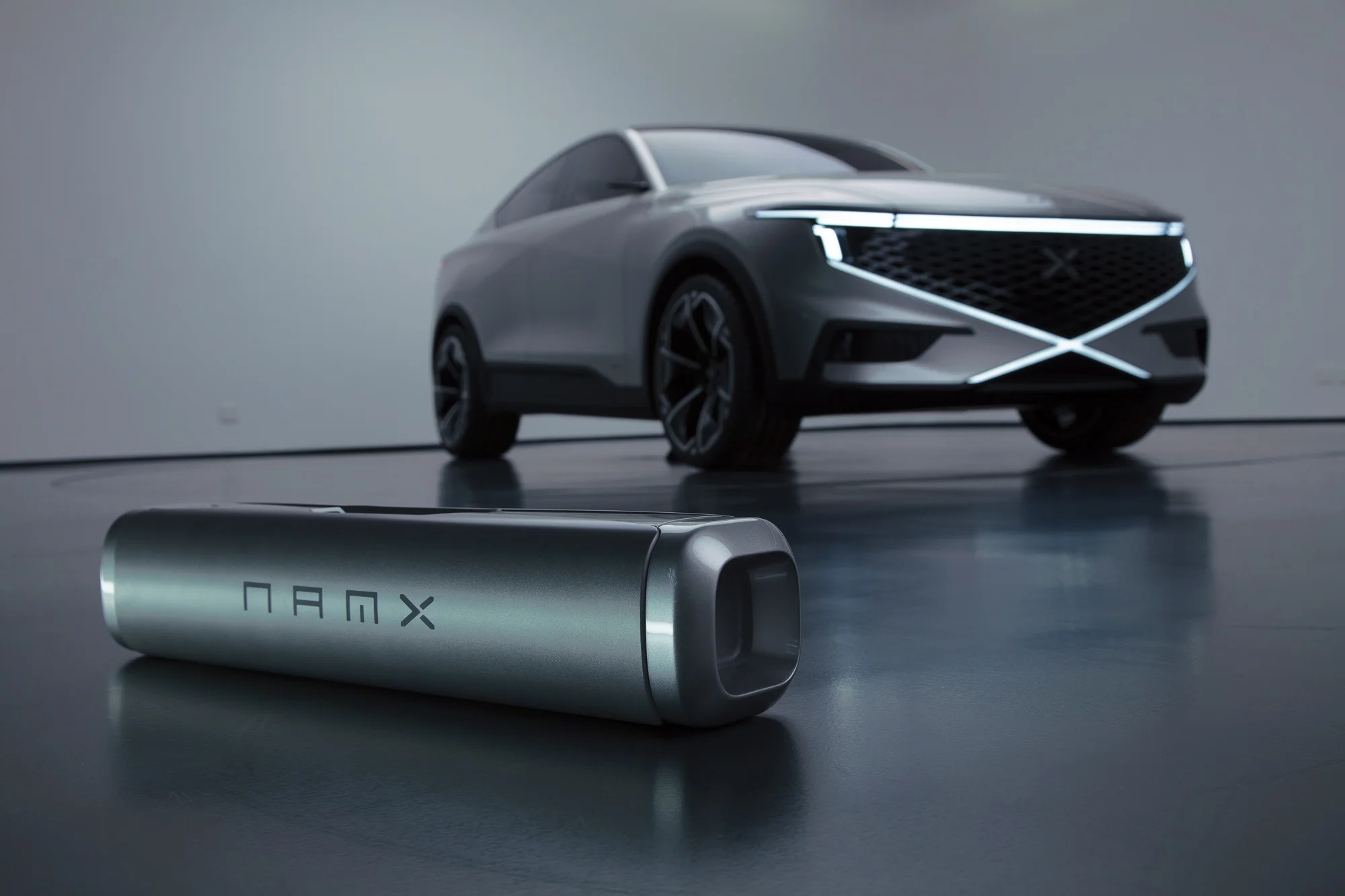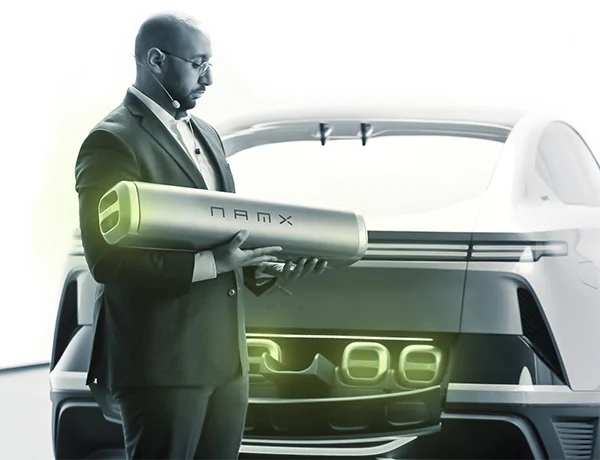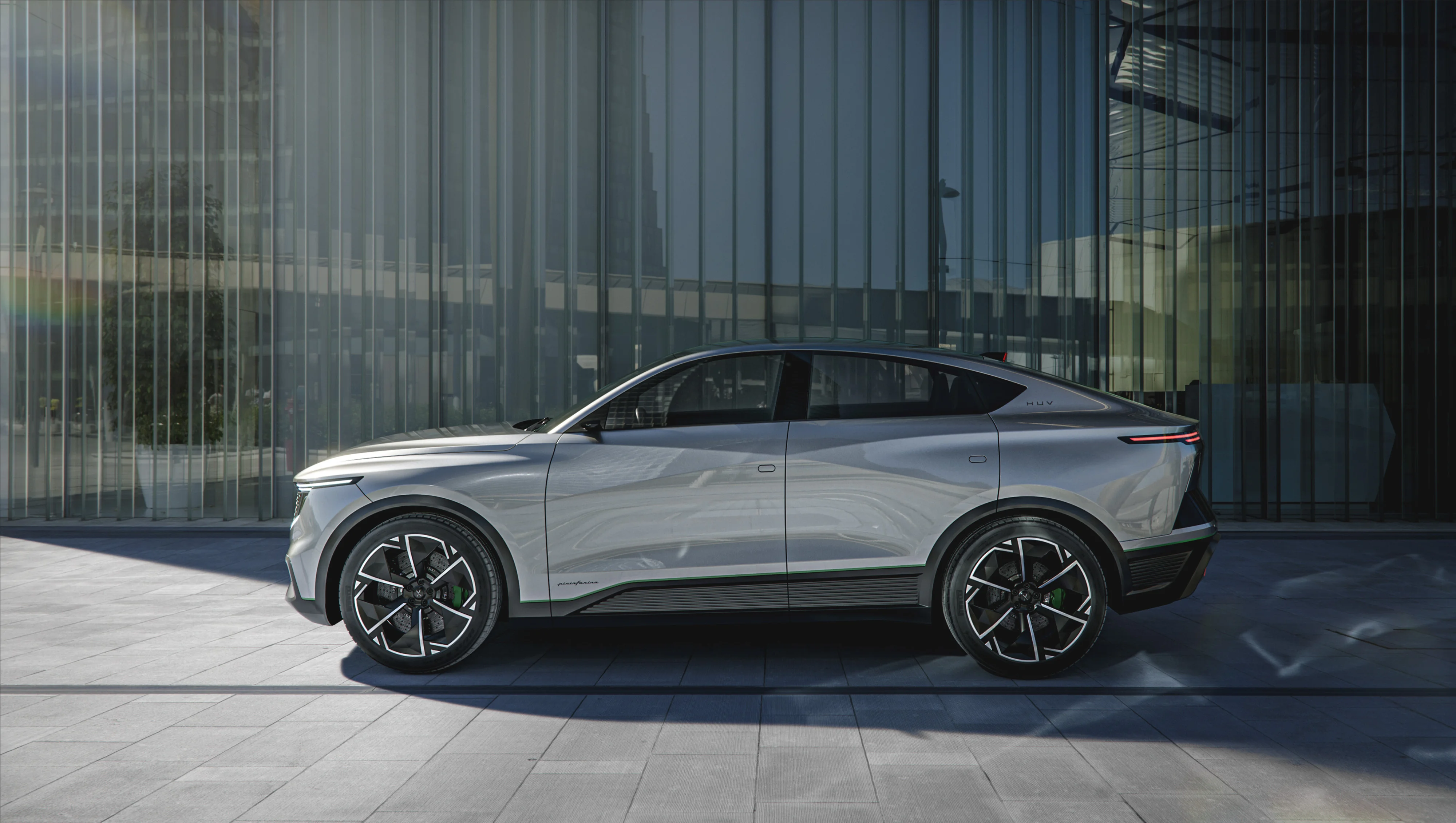
Hydrogen Capsules
First of all, it is important to note that a hydrogen car is technically an electric car. In fact, it creates its own electricity on board. However, the molecule is actually only an energy carrier.
Unlike electric vehicles that use batteries to power the engine, hydrogen cars use a fuel cell. This is the heart of the car, providing the electrical energy required. Hydrogen is therefore used as a fuel. Electrical voltage is obtained through the reaction of two electrodes in the same way as in a standard battery. And this is where hydrogen differs from electric power: the fuel cell does not use metals such as cobalt or lithium. It only requires gases, namely oxygen (O2), which is naturally present in the air, and hydrogen (H).
It doesn't take much research to figure out that this combination forms... water (H2O). A chemical reaction called oxidation is created within the battery. The electrons created are then returned to the electrode containing the hydrogen and oxygen. This movement generates electricity which can then be used to power the car's engine.
In short, the vehicle only emits pure water while powering itself with electricity!

A Clean Car Concept
The hydrogen car is therefore completely green. It emits no pollutants and no fine particles. It is perfectly neutral in terms of greenhouse gas emissions.
However, there is also the question of how the hydrogen molecules are produced. If the molecule is so virtuous, so abundant, and its characteristics have been known for hundreds of years, why is its use not more widespread? Simply because hydrogen is not found in its raw form. A chemical extraction process is needed to isolate the molecules. In most cases, this process uses fossil fuels and is very energy intensive. However, in recent years, part of the production of hydrogen has been carried out by electrolysing water, which involves running an electric current through the water.
For the hydrogen produced to be considered green, the electricity used must come from renewable sources, guaranteeing a zero-carbon performance. No other new energy or carrier has yet opened the way to decarbonised consumption. It is therefore essential to take that direction, especially in the automotive sector.
